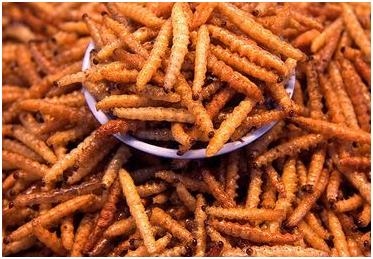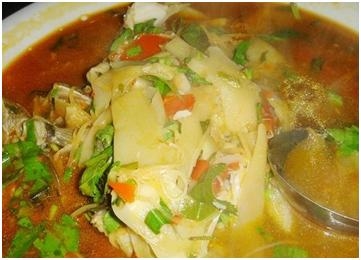代寫COMP3411/9814 Bridge Puzzle編程代做
時間:2024-03-13 來源: 作者: 我要糾錯
COMP3411/9814 Project 1
1/4
COMP3411/9814 Artificial Intelligence
Term 1, 2024
Assignment 1 – Bridge Puzzle
Due: Friday 15 March, 10pm
Marks: 12% of final assessment
Specification
This project is based on a popular puzzle, variously known as "Hashiwokakero",
"Hashi" or "Bridges". You will need to write a program to solve this puzzle, and
provide a brief description of the algorithm and data structures you have used. The
input to your program will be a rectangular array of numbers and dots, for example:
.1...6...7....4.4.2.
..4.2..2...3.8...6.2
.....2..............
5.c.7..a.a..5.6..8.5
.............2......
...5...9.a..8.b.8.4.
4.5................3
....2..4..1.5...2...
.2.7.4...7.2..5...3.
............4..3.1.2
Each number represents an "island", while the dots represent the empty space (water)
between the islands. Numbers larger than 9 are indicated by 'a' (10), 'b' (11) or 'c'
(12). The aim is to connect all the islands with a network of bridges, satisfying these
rules:
1. all bridges must run horizontally or vertically
2. bridges are not allowed to cross each other, or other islands
3. there can be no more than three bridges connecting any pair of islands
4. the total number of bridges connected to each island must be equal to the
number on the island
COMP3411/9814 Project 1
2/4
For example, after reading the 10-line input above, your program should produce this
output:
1---6EEE7====4=4=2
4-2" 2 " 3E8EEE6 2
# |2 " " " # "
5EcE7EEaEa==5"6EE8=5
" # " # #2# |
" #5===9Ea--8=bE8E4|
4=5# " # " # " |3
#2==4 #1-5 # 2 |"
2=7=4===7=2" 5===3"
4==3-1 2
Note that single bridges are indicated by the characters '-' or '|', pairs of bridges by
'=' or '"' and triples by 'E' or '#', depending on whether they run horizontally or
vertically. Water between bridges and islands is indicated by space characters ' '.
In some cases, there may be many solutions, in which case your program should only
print one solution. More details about the puzzle can be found on this Wikipedia
page. Note, however, that our version allows up to 3 bridges instead of 2; also, we do
not insist that the entire graph be connected.
Tools
An executable file called bridgen is provided in the tools directory which can be
used to generate sample data of any specified size (type bridgen -help for details).
Another executable called bridgecheck is also provided, to help you test the validity
of your solutions (see FAQ for details).
Questions
At the top of your code, in a block of comments, you must provide a brief answer (one
or two paragraphs) to this Question:
Briefly describe how your program works, including any algorithms and data
structures employed, and explain any design decisions you made along the way.
Language Options
You are free to write the code in a language of your choosing.
If you write in C, C++, or another compiled languge, your program will be invoked
by: ./hashi
COMP3411/9814 Project 1
3/4
You should submit your source files (no object files) as well as a Makefile which,
when invoked with the command make , will produce an executable called hashi
If you write in Python, your program will be invoked by: ./hashi.py
You should submit your .py files (including hashi.py ).
The first line of your code must specify which version of Python you are using, e.g.
#!/usr/bin/python3
If you write in Java, your program will be invoked by: java Hashi
You should submit your .java files (no .class files).
The main file must be called Hashi.java
If you wish to write in some language not covered by the above options, let us
know and we will try to accommodate you.
Regardless of the language, you are not allowed to use dedicated constraint
programming packages like python-constraint , etc. You are expected to
implement the search method(s) yourself.
Submission
You should submit by typing
give cs3411 hashi ...
Remember to include all necessary files in your submission (including the one with the
answer to the Question).
You can submit as many times as you like – later submissions will overwrite earlier
ones. You can check that your submission has been received by using the following
command:
3411 classrun -check
The submission deadline is Friday 15 March, 10 pm.
5% penalty will be applied to the mark for every 24 hours late after the deadline, up to
a maximum of 5 days (in accordance with UNSW policy).
Additional information may be found in the FAQ and will be considered as part of the
specification for the project.
Questions relating to the project can also be posted to the Forums on WebCMS.
If you have a question that has not already been answered on the FAQ or the Forums,
you can email it to cs3411@cse.unsw.edu.au
Assessment
Your program will be tested on a series of sample inputs of successively increasing
size and difficulty. There will be:
6 marks for functionality (automarking)
COMP3411/9814 Project 1
4/4
4 marks for your algorithm and implementation
2 marks for answer to the Question
You should always adhere to good coding practices and style. In general, a program
that attempts a substantial part of the job but does that part correctly will receive
more marks than one attempting to do the entire job but with many errors.
Groups
This assignment may be done individually, or in groups of two students. Groups are
determined by an SMS field called pair1 . Every student has initially been assigned a
unique pair1 which is "h" followed by their student ID number, e.g. h1234567 .
1. If you plan to complete the assignment individually, you don't need to do
anything (but, if you do create a group with only you as a member, that's ok too).
2. If you wish to team up with someone, you should go to the WebCMS page and
click on "Groups" in the left hand column, then click "Create". Click on the menu
for "Group Type" and select "pair". After creating a group, click "Edit", search for
the other member, and click "Add". WebCMS assigns a unique group ID to each
group, in the form of "g" followed by six digits (e.g. g012345 ). We will
periodically run a script to load these values into SMS.
Plagiarism Policy
Your program must be entirely your own work. In addition, soliciting another person
(or an AI bot) to write code for you – either in person or through the Internet – is
never permitted. Generally, the copying of code already available on the Internet is
also forbidden. If you find some piece of "standard" code in a textbook, or on the
Internet, which you would like to adapt and incorporate into your own assignment,
you must email the lecturer in charge to ask if it is permissible to do so in the
particular circumstances – in which case the source would have to be acknowledged
in your submission, and you would need to demonstrate that you had done a
substantial amount of work for the assignment yourself. Plagiarism detection software
will be used to compare all submissions pairwise and serious penalties will be applied,
particularly in the case of repeat offences.
DO NOT COPY FROM OTHERS; DO NOT ALLOW ANYONE TO SEE YOUR CODE
Please refer to the UNSW Policy on Academic Integrity and Plagiarism if you require
further clarification on this matter.
請加QQ:99515681 郵箱:99515681@qq.com WX:codehelp
標簽:
掃一掃在手機打開當前頁
注:本網條致力提供真實有用信息,所轉載的內容,其版權均由原作者和資料提供方所擁有!若有任何不適煩請聯系我們,將會在24小時內刪除。
無相關信息 昆明生活資訊















